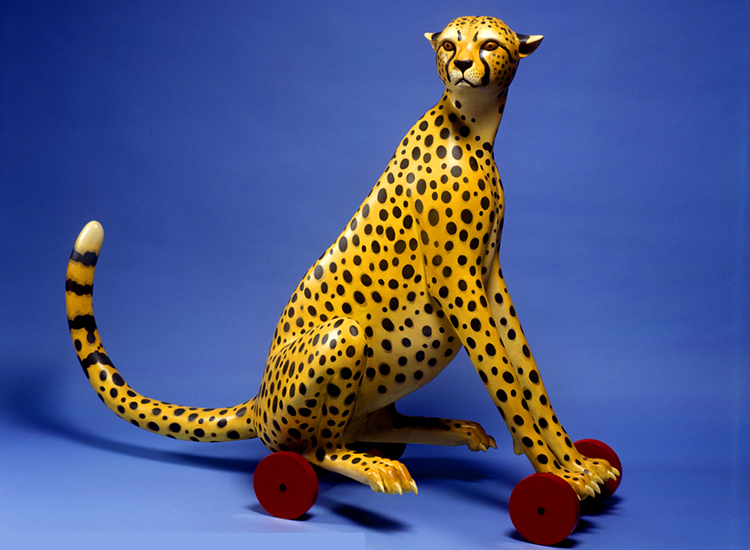When I started my art education in the 1970’s the sculpture studios were pretty much a monoculture. ‘If you kick it and it doesn’t move – then it’s sculpture’ was the joke at the time and amongst the painting fraternity ‘sculpture is the thing you bump into when you step back to look at a painting’.
I was less than moved by the dry formalism of the time and I wanted art to be more human, colourful and sensuous. I thought the subject of the figure should be reinstated and revivified and set about making bright, animated, ‘in your face’ figures. Naked not nude, they were fun, they were outrageous and more importantly they felt contemporary. I flirted with Nicholas Treadwell’s ‘Superhumanism’ and together we briefly thumbed our noses at the art establishment.
I had spent several years working at a zoo before going to Art College, so perhaps not surprisingly my figures soon developed animal alter egos. An exciting new vocabulary of forms, these animal images began to take centre stage. Although on the face of it my work still had an amusing quality, I took it very seriously and underlying the humour were a number of major concerns with both sculptural language and our relationship with nature.
Up until this point all my work had been made in resin and glass-fibre. It had the benefit of being cheap, cheerful and was sympathetic to the content of my work. Moreover I actively enjoyed being irreverent to the ‘truth to materials’ mantra held by the previous generation of sculptors. The problem came in wanting work to be durable enough to withstand the rigours of the outside environment and I now needed to consider the more traditional material of bronze for my work.


